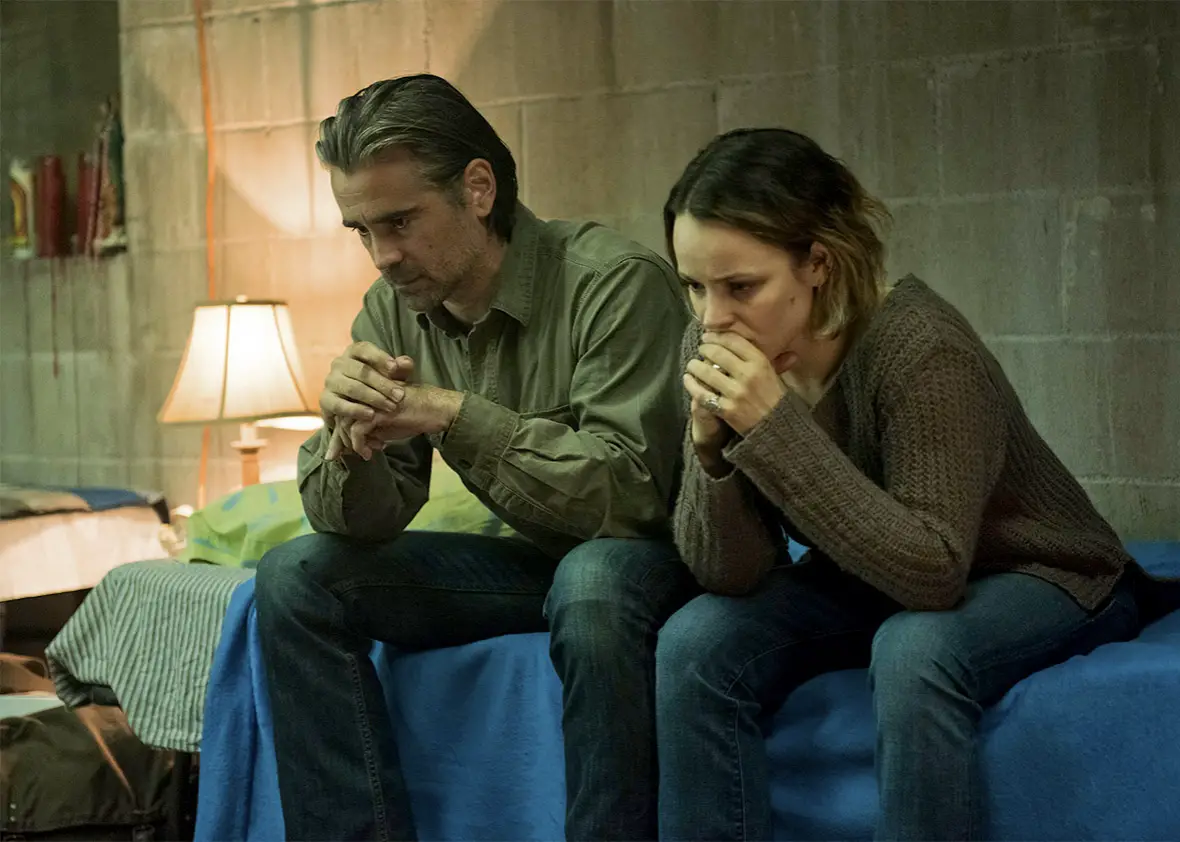“Fargo” vs. “True Detective”
They both have single-season narrative structures and single-season casts, but “Fargo” shows how a sequel season does that right.
By Justin Heller, University of Texas at Austin
In June, True Detective followed up its smash-hit-cult-following first season with a muddled, murky mess of names and noir that left many fans feeling let down and unsatisfied.
Midseason articles with titles like ‘What is Exactly Is Happening Right Now in True Detective’ abounded as the second True Detective season ran its wayward course. I remember being relieved that the articles existed because they were embarrassingly necessary, but being skeptical about the merits of any show that required crowd-sourced background info to be cohesive.

After talking with fans about what they liked and disliked about True Detective Season 2 (TDS2), I found that most people had the same answer: They didn’t understand what was going on, and they didn’t care. Season One had innocent lives in danger. TDS2 focused mostly on a rich scumbag trying to stay rich. Nobody could relate, and so nobody did.
One of the season’s few redemptive qualities is that it acted as a compelling, if completely unintentional parody of the generic hard-boiled detective story, and if you interpret it as a wry satire instead of bald-faced melodrama, then TDS2 transmogrifies into an absolute homerun. It’s as if the producers were trying to bend the genre by playing it as heavy-handed as possible.
In Season One, the chemistry of practical Hart and philosophical Cohle’s odd couple dynamic was absolutely abubble. In Season Two, there wasn’t a single hiccup of humor from anyone. Instead, the dialogue was forced, and everyone wore permanently furrowed brows and shadowy noirish scowls.
So what happened to TDS2? How did the second season of such a critically acclaimed first season fall so far from the tree?
In trying to understand the prodigal season, I found FX’s Fargo to be an especially helpful foil: Both shows operate with single-season narrative structures and single-season ensemble casts. The strength of Fargo’s successful second season comes from Fargo knowing itself—knowing what it is tonally—and consequently, what story it wants to tell.
The FX’s phenom’s second season comes complete with a clearly defined theme, atmosphere and balance that TDS2 was lacking in spades. And unless some drastic downward spiral happens in the last four episodes, Fargo will emerge as one of the best follow-up seasons in recent memory. The characters are vivid and the pace is quick. Wading through TDS2 again after the crispness of Fargo felt like swimming in mud.
Perhaps it started with the creative differences that caused problems between showrunner Pizzolatto and Season One’s director Cary Fukunaga. Some believe that left alone this time around, Pizzolatto didn’t know what story he wanted to tell.
Apparently, Pizzolatto had been developing the Season One story for years, working on it as a book before realizing TV might be the best medium for the story’s scale. That means that there’s a chance that Season One was the only story that Pizzolatto had ever really wanted to tell, so when it was over, the inspiration that had buoyed the show leaked out as a room full of day job writers took over.
What’s more: Season One was based in source material—Robert W. Chambers’ book The Yellow King, a cryptic piece of poetry that has quietly puzzled hardcore bookworms for years. Void of such reference material, TDS2 seemed to be meandering aimlessly like the twisted LA highways in the title credits. There is evidence of external forces behind the show’s production that may have been beyond the showrunner’s control.
As Season One debuted, Pizzolatto said that he would use the show’s change of location each season to delve into lesser-known settings around the country. Then, inexplicably, he moved from the cinematic goldmine of backwoods Louisiana to the drudgery of sprawling Los Angeles.
But Los Angeles? How many shows have we seen shot in LA? Film producers have wrung the city so dry of visual novelty that when the guys from It’s Always Sunny in Philadelphia (another perpetually successful FX project) pitched their show as a group of struggling actors in LA, FX picked it up under two conditions: They change the location to Philadelphia and they become bar owners, not actors.
The reasoning? The execs at FX had simply seen the LA bit too many times before. And where TDS2 went to a long-since-dry well, Fargo’s use of the Frozen North as a backdrop generated curiosity about the show because of its setting, which is exactly what Pizzolatto had said he wanted for TDS2.
Despite all its faults, certain artistic choices in TDS2 worked, if only briefly. Having recently moved to Los Angeles myself, I could appreciate the visual homage to the variety of landscapes that make up the city. The climax in the eighth and final episode found each main character in a very different geographical setting all unique to LA. The ocean, forest and desert become more than just locations in that moment; the location itself becomes a character.
Ultimately, even though geographic realism is arguably TDS2’s best feature, if you want to see the same phenomenon executed perfectly, you should just watch Fargo instead.
Make no mistake, True Detective Season 3 will be better. It has the namesake, the cult status, and the support and success of Season 1. People will still tune in. And it’ll be easier to stream, as people opt to watch old Fargo episodes before they commit to re-watching weepy Vince Vaughn throw corny phrases around like a cheesy kingpin from a bad 1940’s gangster movie.
Maybe McConaughey watched the second season and feels a pang of sadness about the lackluster follow up. Maybe he’ll come back for a cameo, wink, point, and say a couple Alright, Alright, Alright’s to reward the faithful.
Or maybe the euphemisms will prevail and grow to hyperbolic proportions, and the show will bleed out as it dies a slow, 8-episode death. Before any of this happens though, someone desperately needs to tell a joke on the set of Season Three, lest they turn around and see themselves already dead, thirty feet in the background.









